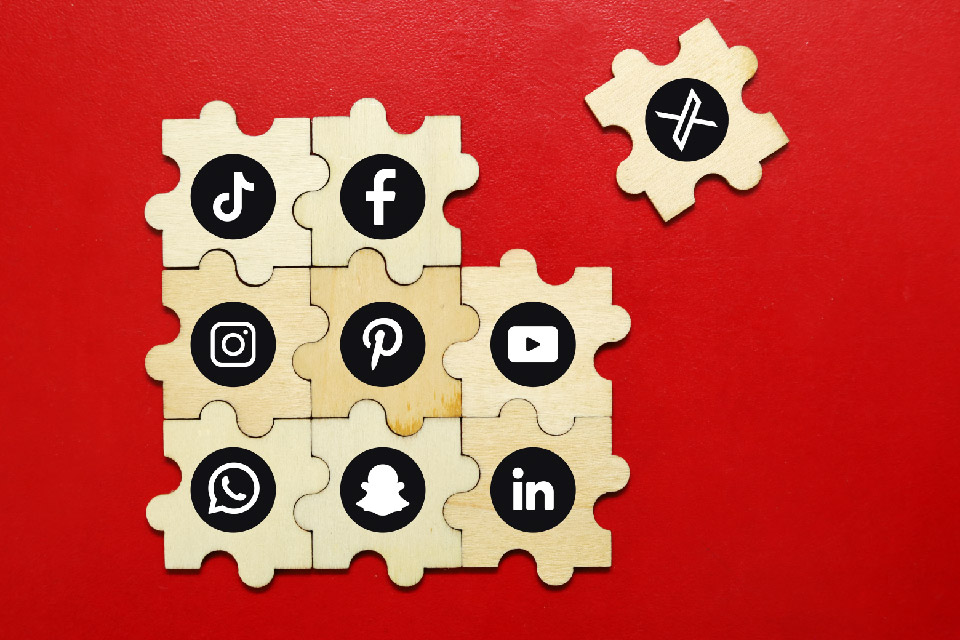
By now, we have all heard and understood the importance of having an online presence currently. So great, you’ve built that presence through your website and social media platforms. Now, you may be asking, what’s next? What more can you do to take your online presence up a notch. While setting up these platforms is a crucial first step, the real work only begins when you optimise these platforms.
This article will take a deep dive into this integration is, how you can incorporate it into your website and the benefits of digital channels integration.
What is social media integration?
As the term suggests, social media integration involves connecting your social platforms to your website. This process is an integral part of a successful marketing strategy, as it seamlessly combines the two types of platforms to create a cohesive and consistent online presence.
In fact, you’ve probably come across a website with this integration without even realising it! For instance, most websites have their social media platforms linked in either the header or footer of the webpage; that right there is a great example of social media integration!
Having these links provides website visitors with a chance to explore your brand beyond the bounds of your website. This extends the user journey, encourages multiple brand touch points, and unlocks a wealth of benefits.
And the best part is, with the number of resources and plugins now readily available to website developers, the possibilities with integrations are endless! You can now link as many social platforms (Instagram, Facebook, X, LinkedIn, Tik Tok Pinterest, Snapchat and Threads) as you like.

Benefits of social media integration
It is more than just a trendy addition to your website it’s a vital optimisation decision that can significantly enhance your brand’s presence, engagement, and overall success.
Here’s why this integration is a crucial step for any business:
Extended user journey
We previously discussed how this integration enhances the user journey by extending it beyond a single platform. By integrating your social platforms, the user journey does not just begin and end on one platform but instead flows across others. For example, a user coming from one of your Instagram page will want to explore your brand in-depth on your website, while someone heading to the social platforms from the website may want to engage with the brand on a more personal level.
Customer-brand relationships
This integration can strengthen connections with potential customers. When visitors see your site and platforms as a trusted source for product and service information, it builds their confidence and increases the chances of them interacting.
Read More: What Is a Content Management System (CMS) and How Does It Work
Broader reach
This integration doesn’t just increase your brand’s reach on a single platform, it amplifies your presence across a wide range of channels and opens the door to diverse audiences. Additionally, your social platforms each have their own user base, often with different demographics, interests and behaviours. When your website is connected to these platforms, it allows you to tap into these unique communities that might not have discovered your brand otherwise.
Data and analytics
One of the most powerful benefits of this type of integration is the wealth of insights and data you have access to with both platforms. By incorporating your socials into your website, you can track user interactions and gather valuable information that directly informs your marketing, content and engagement strategies.
Different contact touchpoints
This integration encourages multiple brand touchpoints by creating consistent and interactive opportunities for customers to engage with your brand across various platforms.
Learn More: Our Services

How to integrate your social media into your website
In this section, we will discuss four of the most popular ways to integrate your socials into your website.
Placing your website link into your bio is one of the simplest and most effective forms of social media integration. In doing so, you can easily direct your audience from your socials towards your website, where they can explore more about your brand.
It is important to note that when using this method of integration, the link to your website is not only clickable but functional too, allowing for a seamless user experience.
Incorporate social media logins into your website
By incorporating social logins into your website, you can simplify the login or registration process for your website visitors. Instead of going through lengthy steps like entering personal details, creating a new password or verifying through codes, they can easily log in using their existing social accounts.
Give your visitors the option to share website content on their platforms
This is a common practice in cross-channel promotion, and it is achieved by adding share buttons to your website, allowing visitors to effortlessly share content on their preferred digital channels.
Not only does this boost the visibility of your content but also increases engagement by making it easier for your audience to spread the word. As a result, your content can reach a wider audience and create a stronger connection between your website and your online presence.
Place social media buttons in your website
Placing social buttons is an effective way to strengthen your online presence while interacting with your audience. When implementing this form of integration, it is important to position these buttons in a visible location where they can be easily seen, recognised and accessed.

Repurpose posts from your socials by placing them on your website
Incorporate content from your socials so that the feed shows directly on your website. This approach serves two main purposes. One of them is providing additional value to your visitors while also offering powerful social proof. By displaying these posts, customer reviews or user-generated content on your website, you can showcase that real people are engaging with your brand and finding value in what you offer.
Final Thoughts
Social media integration isn’t just a technical add-on — it’s a strategic move that directly influences user engagement, brand perception, and long-term growth. If your website and social platforms are still operating in silos, you’re leaving value on the table.
Let’s change that. Get in touch with Vetro Media to connect your digital assets, amplify your reach, and build a cohesive online presence that works harder for your brand.
Related Articles







